Posted May 31, 2024 by Tiffany Lee
In case you missed these stories highlighting research and creative activity at the University of Nebraska-Lincoln, the Office of Research and Economic Development’s communications team has compiled a roundup of some recent top stories from research.unl.edu and other sources.
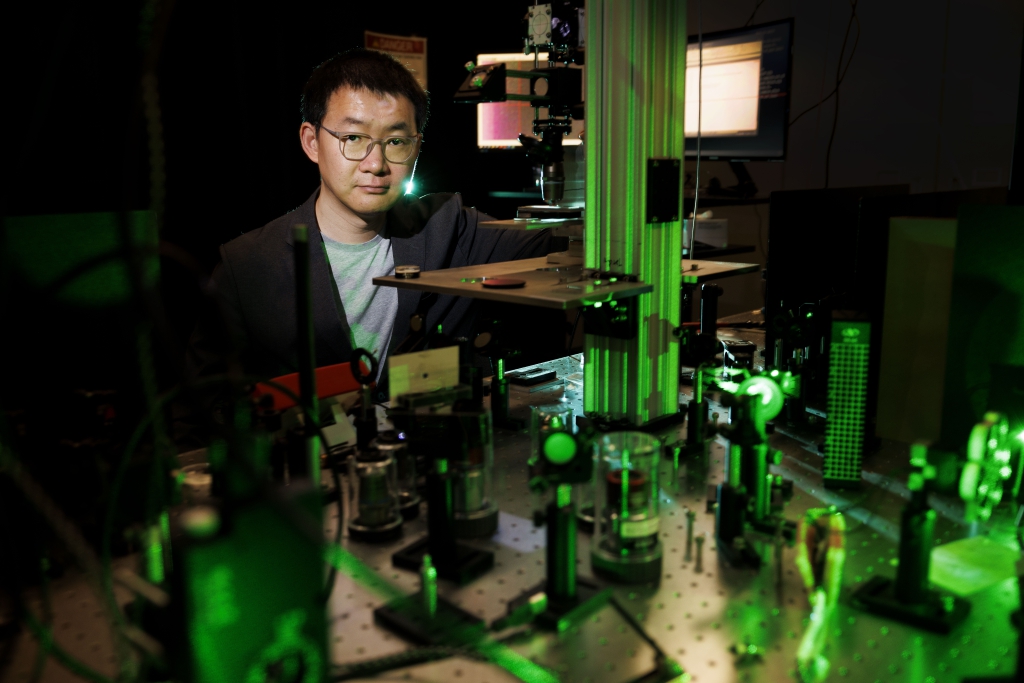
Guo looking for answers behind semiconducting material properties
Who: Yinsheng Guo, assistant professor of chemistry
What: Guo is using a $648,335 grant from the National Science Foundation’s Faculty Early Career Development Program to answer fundamental questions about metal halide perovskites, which have emerged in recent years as a low-cost, highly efficient semiconducting material for solar energy, solid-state lighting and more. Despite their exceptional performance, researchers do not have a comprehensive understanding of the origin of MHPs’ outstanding optoelectronic properties. By filling this gap, Guo’s work will help ensure that MHPs can be further developed and commercialized. Through the project, he will also transform how physical chemistry is taught to undergraduate and graduate students.
“Chemistry is the central science and serves as the physical foundation for advancements in both biomedical and material fields,” Guo said. “A good conceptual understanding of the physical and chemical principles enables and empowers a future science, technology, engineering and mathematics workforce.”
Writer: Dan Moser, Office of Research and Economic Development

New core facility will advance biomedical, ag sciences research
Who: CryoEM Core Facility at the University of Nebraska-Lincoln
What: A May 6 grand opening for the CryoEM Core Facility brought together leaders and researchers from the University of Nebraska to celebrate a new opportunity for interdisciplinary research. The facility houses the state’s first cryo-electron microscope, which is one of just a handful in the region. CryoEM microscopy is a powerful imaging technique that enables researchers to observe biological molecules, complexes and cells at near-atomic resolution. The instrument is expected to bolster UNL’s research strengths in the biomedical and agricultural sciences and propel collaborations across NU and with other universities and companies in the Midwest. The facility is a collaborative effort of ORED, the Nebraska Center for Integrated Biomolecular Communications, the Institute of Agriculture and Natural Resources’ Agricultural Research Division, the College of Arts and Sciences and the College of Engineering.
“What makes UNL a special place is that we are able to bring people together to do great things that can’t be done by any group alone,” said Mark Button, dean of the College of Arts and Sciences.
Writer: Ashley Washburn, Office of Research and Economic Development
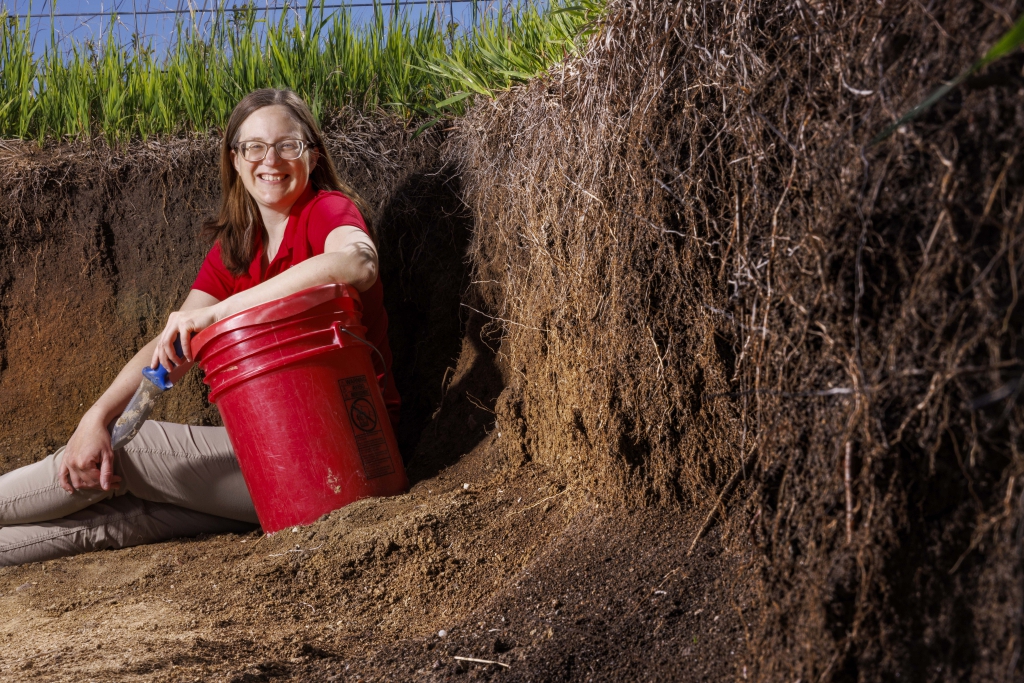
Turk investigating soil health over time, a key to climate resilience strategies
Who: Judith Turk, associate professor in the School of Natural Resources
What: Turk received an $845,000 grant from the National Science Foundation’s Faculty Early Career Development Program to analyze changes in the Great Plains’ soils, known as Mollisols, over time. These changes have important implications for food security and resilience to climate change, yet they are difficult to track because Mollisols are thick and dark, which masks the effects of gradual degradation until it reaches an advanced stage. Turk will compare legacy soil data to today’s soil data to quantify change across various characteristics, which is critical for developing effective strategies to mitigate and adapt to climate change. The approach represents a new way of looking at the study of soils.
“This idea of thinking of soil as a body that’s undergoing continual rapid change over decadal time scales is a different approach to pedology,” Turk said. “This will help us to transform our view of the information that’s conveyed through static soil maps.”
Writer: Tiffany Lee, Office of Research and Economic Development
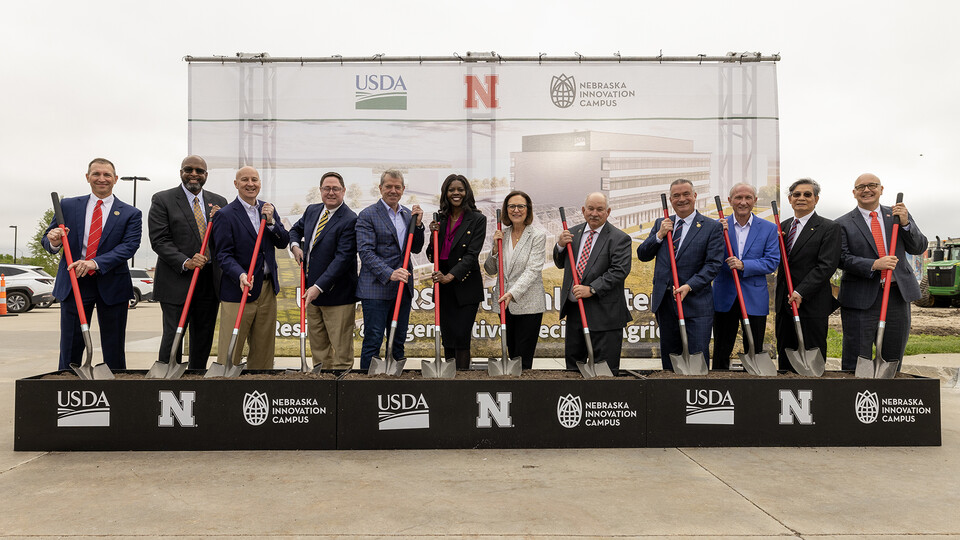
Construction begins on groundbreaking precision ag research center
Who: National Center for Resilient and Regenerative Precision Agriculture
What: Construction of this state-of-the-art research center at Nebraska Innovation Campus launched on May 6 with a ceremony that included federal, state and university leaders. The center – a partnership between the U.S. Department of Agriculture’s Agricultural Research Service, UNL and NIC – will focus on the challenges and opportunities in agricultural innovation for the 21st century. These include agriculture in the digital age and plant responses to pests and pathogens under diverse environmental conditions. Once fully completed, the research complex will be a hub for multidisciplinary experts, scientists and engineers who will collaborate with industry and producers to improve water and food security, increase agricultural resilience and enhance agricultural profitability.
“The complex problems we face today in the ag industry require unprecedented levels of collaboration to overcome. This facility will help us achieve that goal, aligning resources and magnifying impressive impacts on agriculture nationwide,” UNL Chancellor Rodney D. Bennett said. “This national center will become the model for excellence in ag-focused innovation.”
Writer: University Communication and Marketing

Food for thought: Study links key nutrients to slower brain aging
Who: Aron Barbey, director of the Center for Brain, Biology and Behavior and Thompson Professor of psychology; Jisheng Wu, doctoral student in psychology; Christopher Zwilling, University of Illinois at Urbana-Champaign
What: Barbey led a multimodal study – combining state-of-the-art innovations in neuroscience and nutritional science – to explore the role of nutrition in healthy aging of the brain. Participants who performed better cognitively had a distinct nutritional profile correlated with nutrients found in the Mediterranean diet. The study is one of the first and largest to combine brain imaging, blood biomarkers and validated cognitive assessments. Previous research in this area has mostly relied on food frequency questionnaires, which depend on participants’ own recall.
“The unique aspect of our study lies in its comprehensive approach, integrating data on nutrition, cognitive function and brain imaging,” Barbey said. “This allows us to build a more robust understanding of the relationship between these factors. We move beyond simply measuring cognitive performance with traditional neuropsychological tests.”
Writer: Deann Gayman, University Communication and Marketing
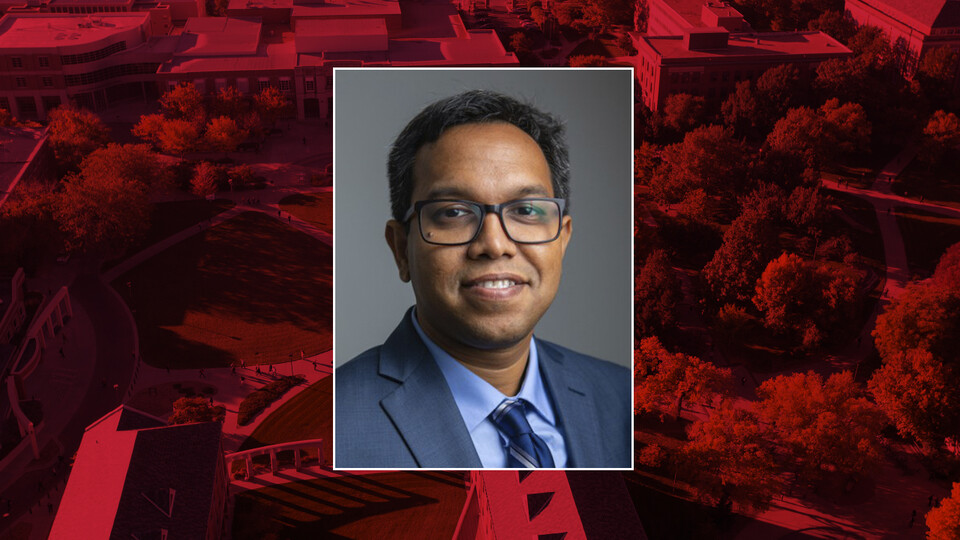
Husker-led team’s approach shows promise in degrading ‘forever chemicals’
Who: Nirupam Aich, associate professor of civil and environmental engineering
What: Aich’s team is advancing research on a new method for removing and destroying harmful “forever” chemicals in America’s water supply. These chemicals, per- and polyfluoroalkyl substances, or PFAS, are found in a wide range of consumer products and are linked to cancer and other health issues. Aich is working on using carbon-based nanomaterials, made from reduced graphene oxide, sheet-like carbon structures and nano zero valent iron metal nanoparticles, to degrade the two major PFAS. This approach is significantly more environmentally safe than the current norm of incineration, which is highly energy-intensive and expensive. The research, supported by the National Institutes of Health, was recently published in the Journal of Hazardous Materials.
“We’re running against time,” Aich said. “These chemicals don’t degrade in the environment and are present in water, air and soil. We are all drinking water every day, and there’s a minimum amount (of PFAS) you can consume before it will start to affect your body.”
Writer: Karl Vogel, College of Engineering
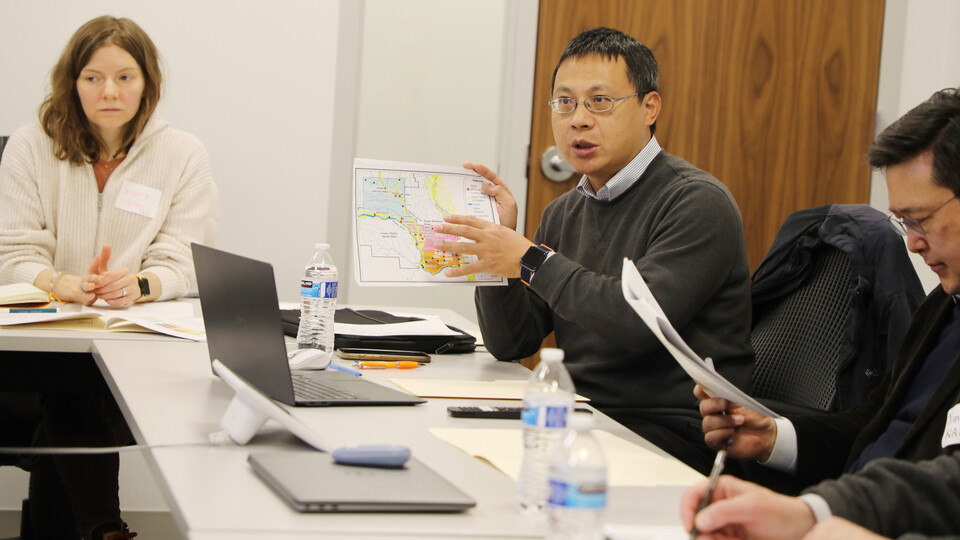
Nebraska team helping hard-hit communities prepare for future floods
Who: Zhenghong Tang, director of the Community and Regional Planning program in the College of Architecture; Yunwoo Nam, professor of community and regional planning
What: Tang and Nam are leading a team of two postdoctoral researchers and three graduate students in developing long-term recovery and resilience strategies for the Nebraska communities hardest hit by the historic flooding in 2019. Supported with $1 million in federal funds awarded via the Nebraska Department of Economic Development, the team is working to boost risk awareness and build robust housing resilience plans at both local and regional levels. The team is focused on non-construction, non-engineering mitigation strategies such as risk identification, public education and land-use policies, including improved zoning regulations to deter future development in flood-prone areas.
“There are serious needs, particularly among low-income, disadvantaged and under-resourced communities,” Tang said. “Those communities are still at risk for future flooding. That’s why we need to undertake a lot of public awareness, stakeholder education and policy actions to mitigate the risk for the future.”
Writer: Leslie Reed, University Communication and Marketing

Armstrong helping strengthen impact of severe weather alerts
Who: Cory Armstrong, Pike Professor of journalism and associate dean for research and faculty affairs
What: Armstrong is advancing her research focused on how individuals receive and respond to various messaging related to severe weather, including hurricanes, thunderstorms, tornadoes, floods and drought. In her most recent study, published in the Journal of Extreme Events, Armstrong investigated factors that impact peoples’ willingness to protect themselves. She found that about half of people surveyed in the mid-south could not accurately define a tornado warning. Armstrong also found that people living in rural areas who have experienced a tornado before were more likely to prepare when forecasts predict severe weather. The research, funded by the University Corporation for Atmospheric Research, underscores the need for improved disaster messaging.
“As a professional communicator, I am fascinated by how individuals receive and respond to various messaging,” Armstrong said. “It is especially interesting with severe weather alerts, because there is a general assumption that everyone knows exactly what they mean and how you should respond. Through this research, we’ve found that is not necessarily true.”
Writer: Troy Fedderson, University Communication and Marketing





